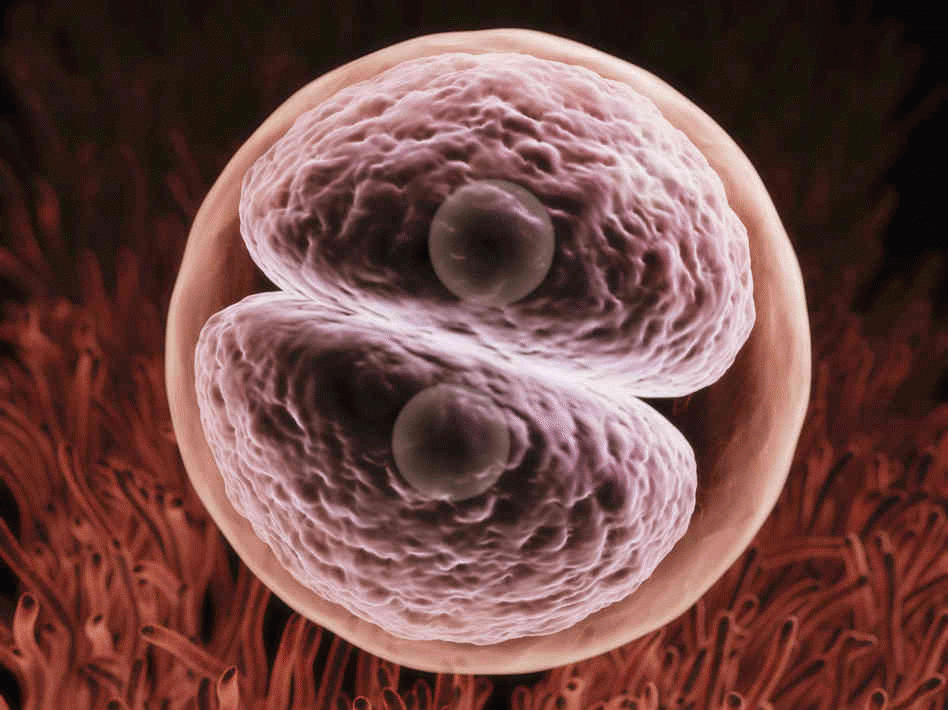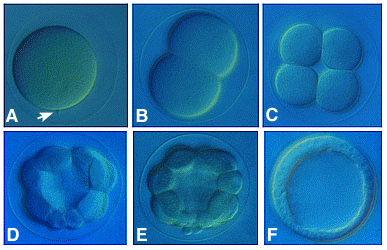 A zygote begins its journey to express in the form of a human being.
A zygote is a structure that forms when a sperm fertilizes an egg. The zygote then divides many times by mitosis to form an embryo. The first division of the zygote forms two cells, the next four, the next eight, and so on.
A zygote begins its journey to express in the form of a human being.
A zygote is a structure that forms when a sperm fertilizes an egg. The zygote then divides many times by mitosis to form an embryo. The first division of the zygote forms two cells, the next four, the next eight, and so on. Throughout the animal kingdom, an incredible variety of embryonic types exist, the zygote after fertilization, undergoes many cyclic events to develop into a complete organisms.
The sequential steps are as follows :
Immediately following fertilization, cleavage occurs. Cleavage is a series of extremely rapid mitotic divisions wherein the enormous volume of zygote cytoplasm is divided into numerous smaller cells. These cells are called blastomeres, and by the end of cleavage, they generally form a sphere known as a blastula. After the rate of mitotic division has slowed down, the blastomeres undergo dramatic movements wherein they change their positions relative to one another. This series of extensive cell rearrangements is called gastrulation, and the embryo is said to be in the gastrula stage. As a result of gastrulation, the embryo contains three germ layers : the ectoderm, the endoderm, and the mesoderm.
 Cleavage pattern of an embryo
A: zygote, B: 2–cell stage, C: 8–cell, D: 16–cell, E: 32–cell, F: Blastula A zygote initially develops into a hollow sphere, called a blastula, which undergoes rearrangement and differentiation to develop into a complete organism.
Cleavage pattern of an embryo
A: zygote, B: 2–cell stage, C: 8–cell, D: 16–cell, E: 32–cell, F: Blastula A zygote initially develops into a hollow sphere, called a blastula, which undergoes rearrangement and differentiation to develop into a complete organism. Once the three germ layers are established, the cells interact with one another and rearrange themselves to produce tissues and organs. This process is called organogenesis. For example, the outer layer of skin comes from the ectoderm, while the inner layer (the dermis) comes from the mesoderm. After organogenesis, an important phenomenon known as Morphogenesis occurs. Morphogenesis (meaning the "beginning of shape"), is the biological process that causes an organism to develop its shape. This particular process is followed by cellular differentiation and cellular growth.
In many species a specialized portion of egg cytoplasm gives rise to cells that are the precursors of the gametes (the sperm and egg). The gametes and their precursor cells are collectively called germ cells, and they are set aside for reproductive function. All the other cells of the body are called somatic cells. This separation of somatic cells (which give rise to the individual body) and germ cells (which contribute to the formation of a new generation) is often one of the first differentiations to occur during animal development. The germ cells eventually migrate to the gonads, where they differentiate into gametes. The development of gametes, called gametogenesis, is usually not completed until the organism has become physically mature. At maturity, the gametes may be released and participate in fertilization to begin a new embryo. The adult organism eventually undergoes senescence and dies.